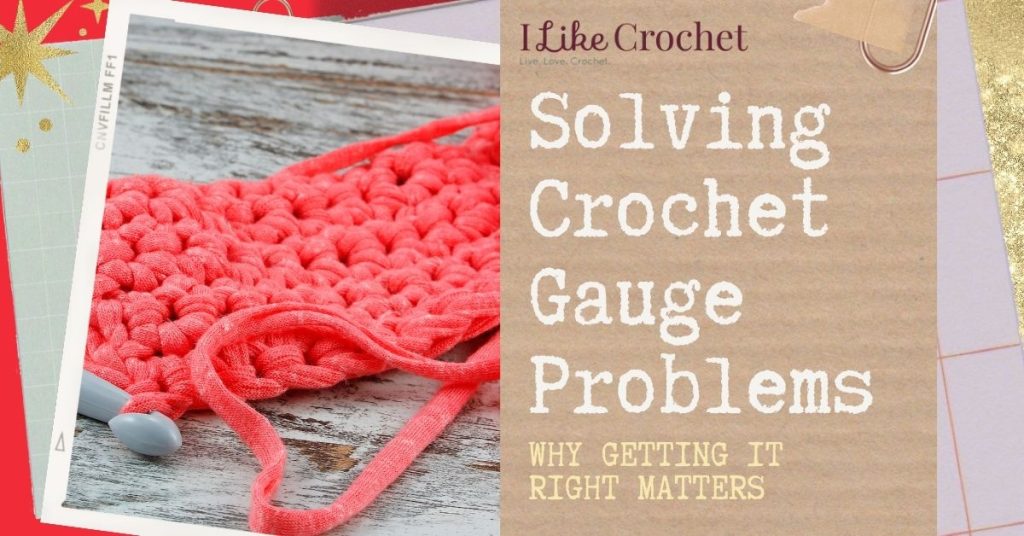
If you’ve made it this far, you’re already halfway there to solving your gauge problems. Creating a gauge swatch is an important step that many people skip and it leaves them wondering why something didn’t fit. The gauge swatch information, if necessary, is given in the pattern so you will be able to make a product that fits and looks like the designer intended.
Gauge is the number of stitches per inch and rows per inch that result with the specified yarn and hook combination. Keep in mind that everybody crochets differently; some work loosely and others work very tightly. As you can imagine, this results in very different size swatches.
Begin by working a swatch with the specified combination of yarn and hook. The pattern will tell you the stitches to work, how many and also how many rows you’ll need to do. Be sure to measure in a well lit area so you can really see your stitches. If you have more stitches per inch than the pattern calls for, go up a hook size and try again. Alternately, if you are short stitches, go down a hook size.
You will also need to be sure that your row count is correct. If you have two few rows per inch, your finished project will be too short. Too many, and your project will be too long. Once you have the correct number of stitches per row, check your row count. Adjusting your row count can be done with the same size hook, as the error is often in the height of your stitches. To adjust the height of your stitches, you’ll need to adjust the draw of your technique. This means that when you are inserting the hook to make your next stitch, adjust how much yarn you draw up. If your row count comes up short, that means your stitches aren’t tall enough so you’ll need to draw up slightly more yarn. This will make your stitch slightly taller. If you have too many rows, make this draw slightly tighter. This is basically a matter of tension, and with practice, you’ll become a pro at making your stitches even and consistent throughout patterns and even between patterns.
Once you become familiar with your crocheting style, you’ll be able to make a well-reasoned and educated guess at what size hook you’ll need to obtain gauge. For instance, I know that I tend to crochet a bit loose with worsted weight yarns. As a result, I’ve learned through experience to start my gauge swatch with a hook one size smaller than suggested.
Don’t forget that the swatch is there for you to get your trial-and-error out of the way before you start work on your big project.
Have fun and get swatching!



I can relate to Karen H. I NEVER get the guage right, no matter what I’ve tried and I think I’ve tried it all. I had to use double strand of 4weight yarn and a larger hook to get the guage for a sweater I made for my baby nephew. Didn’t like how thick it was, but the darn guage was right! These tips are standard and most of us have tried them. What else can we do if those tips don’t work?
You have a good question. I’ll be waiting for an answer with you. It also can be the yarn substitution is not correct.
Such good advice. I’ve only been crocheting for a few years. I attended a couple of sessions of classes thru our local Rec Department, but the instructor was not very helpful. So started watching you tube videos on stitches I was not familiar with. Reading info like you provide is also very helpful. My swatches are usually true. But, sometimes I need help.
I can never get gauge right. Correct stitches and rows, multiple size hooks and my swatch is never the right size.
Great info. I learned that I am what is technically called a “yanker”…meaning I crochet too tight, essentially yanking on the yarn as a crochet. I have learned to generally go up a full hook size but I am definitely married to the gauge swatch to double check. Hard lesson learned through experience.
I usually have to go up two sizes, so I do the swatch at least one size larger than the suggested size for the yarn. I’m currently doing a project with weight 2 yarn and using an I hook to get the guage.